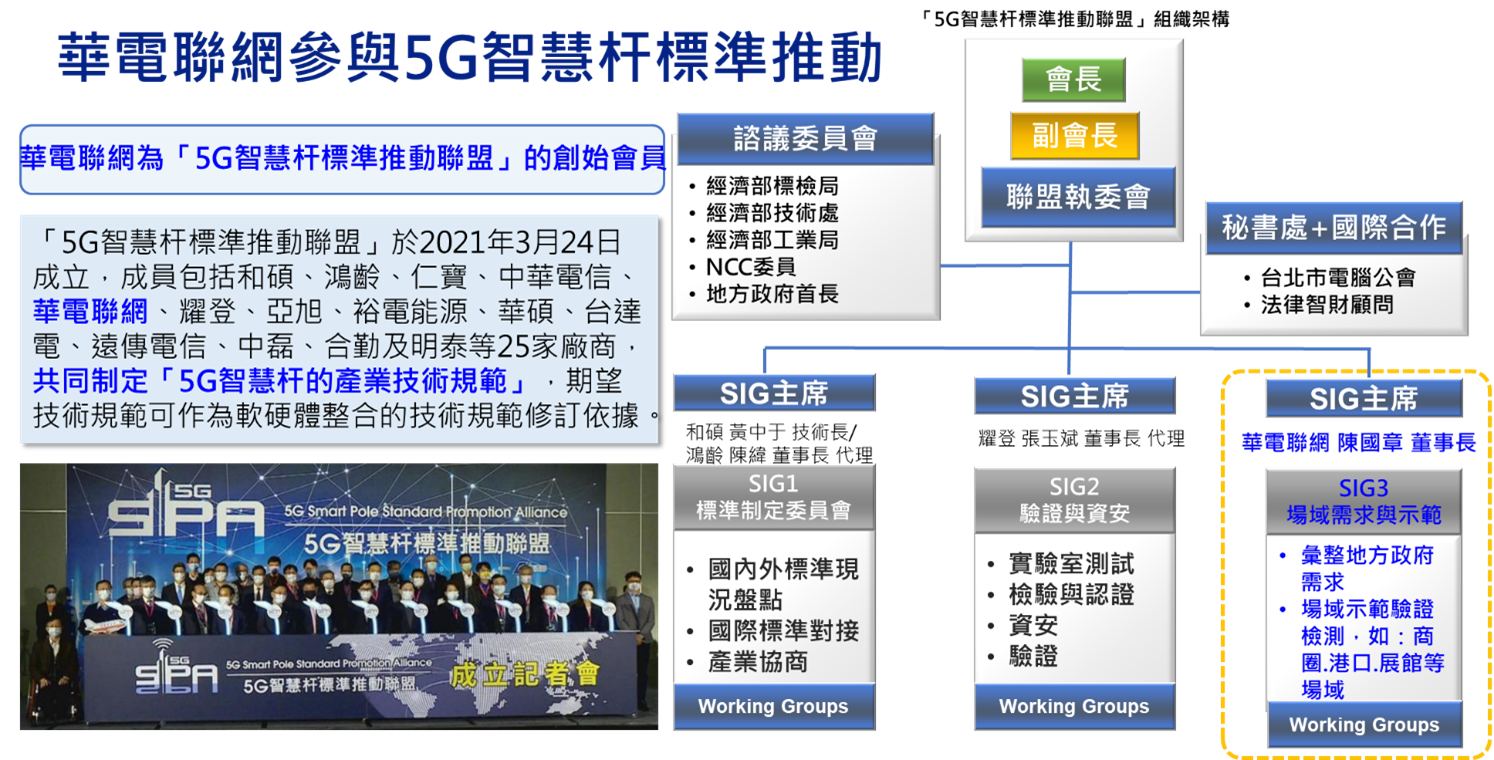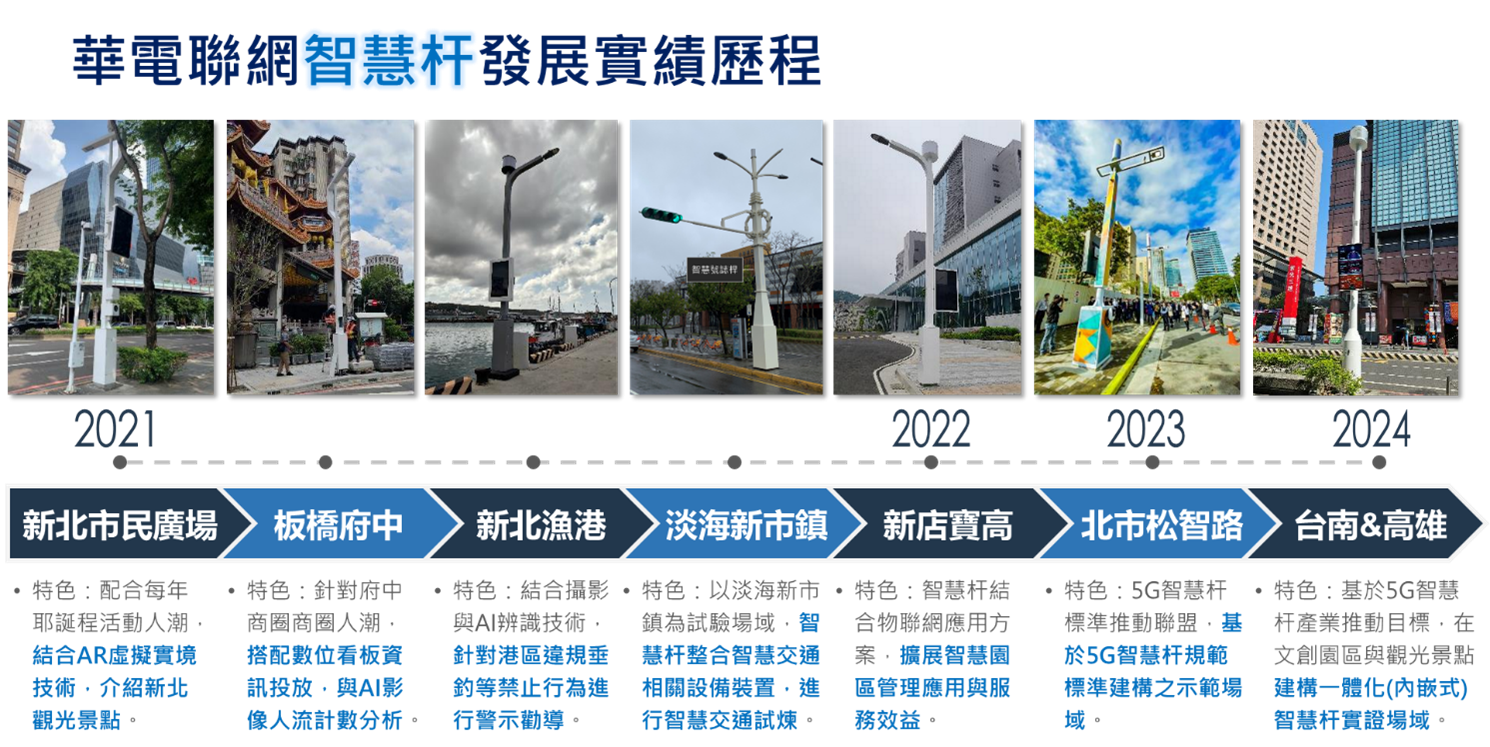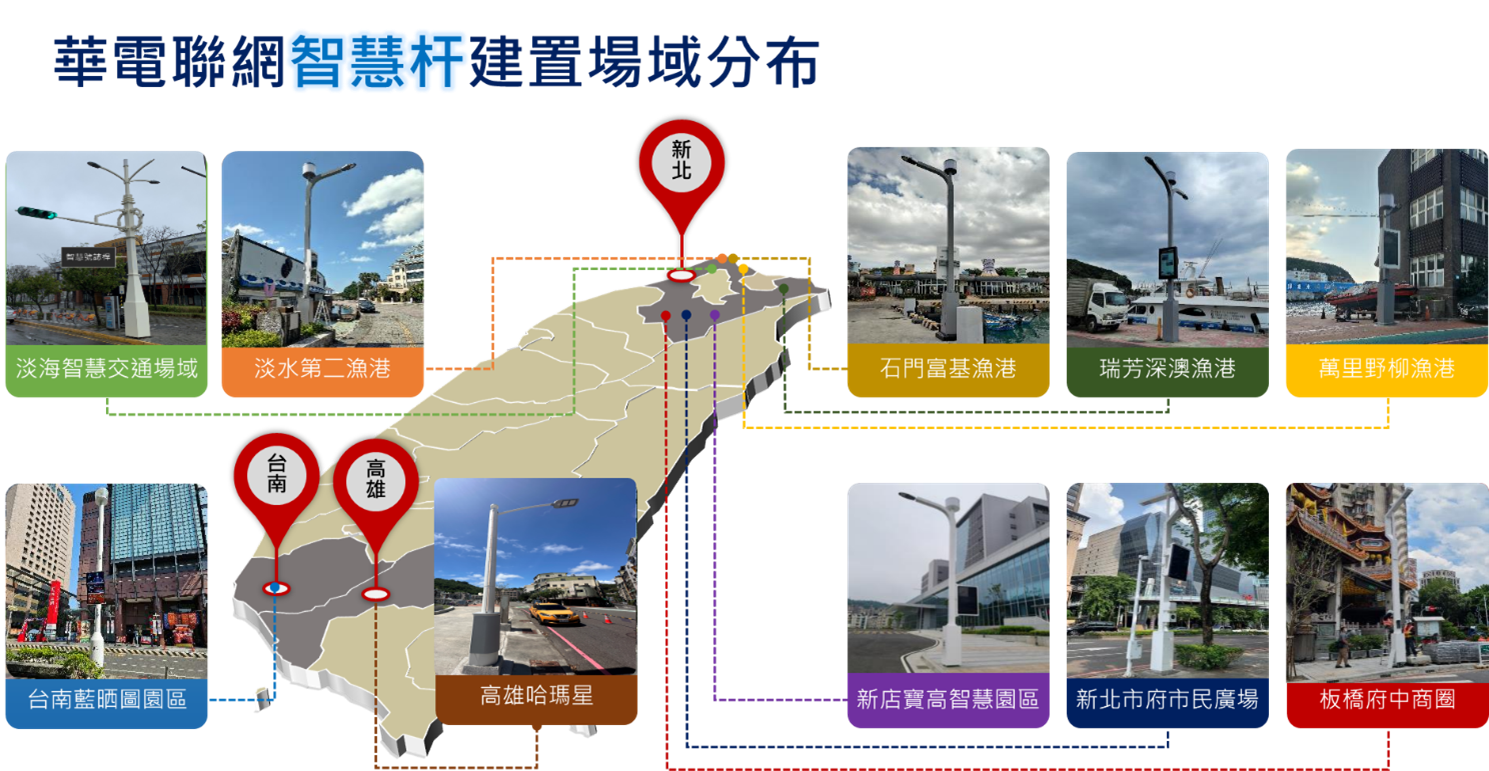Smart Applications
Intelligent Transportation Service | Smart City Control Solutions | AIoT innovative application services assist digital transformation | Smart Pole Solution | AR remote video collaboration application | Drone application solutions - unmanned aerial vehicles / drones | VSV Cloud (Video Surveillance Cloud) | Technological disaster prevention and smart construction solutions | Intelligent Building Management System solutions
Smart Pole Solution
Brief Introduction
Streetlights, as a fundamental infrastructure widely seen in cities, play an indispensable role in urban development and daily life. Traditional streetlights have room for improvement in lighting management, monitoring, maintenance, and service applications. With the development of network technology and innovative solutions, new-generation smart poles integrate traditional lighting functions with advanced features such as simplified equipment management, flexible energy-efficient lighting, and intelligent service applications. Smart poles will become a crucial component of smart city infrastructure.
Descriptions of Features and Advantages
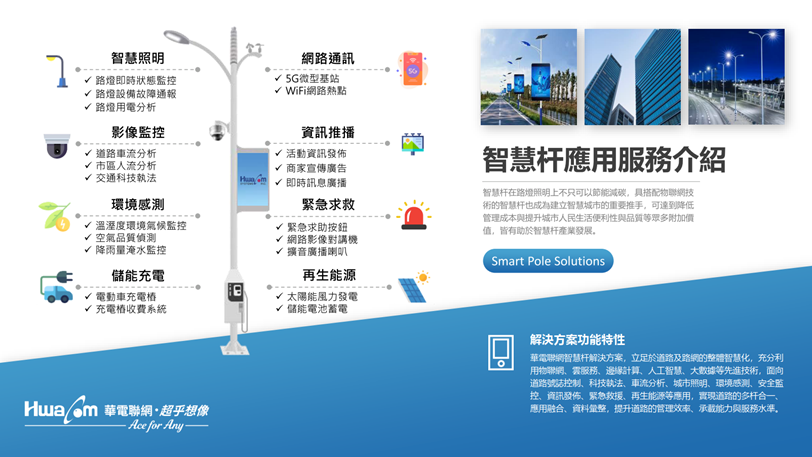
Smart poles offer numerous value-added services, including streetlight monitoring, small cell stations, micro-weather stations, digital signage, smart law enforcement, traffic analysis, pedestrian flow analysis, charging stations, and emergency notification systems. The key features are described as follows:
Streetlight Monitoring
Enables remote equipment management and real-time monitoring of streetlight operation through wireless communication technology. Any operational anomalies are instantly detected and reported for maintenance.
Small Cell Stations
Smart streetlights, distributed throughout the city, serve as ideal public infrastructure for small cell station deployment. By integrating base stations on streetlight poles, they can provide 5G mobile network coverage or Wi-Fi hotspots for public use.
Micro-Weather Stations
Equipped with environmental sensors, smart streetlights can collect and report real-time local weather conditions, which can also be displayed on digital signboards for public reference.
Smart Law Enforcement
Utilizing AI-based deep learning image recognition, smart streetlights can detect traffic violations, such as driving in the wrong direction, illegal parking, crossing double yellow or white lines, improper lane usage, failure to follow traffic signals when turning, and driving during restricted hours.
Traffic Flow Analysis
AI-powered deep learning technology can analyze road traffic patterns, including vehicle classification, traffic direction settings, lane attribute settings, and turn attribute analysis.
Pedestrian Flow Analysis
Provides pedestrian counting, queue detection alerts, geofencing, restricted area warnings, and dwell time analysis.
Digital Signage
Digital signboards can be integrated with real-time information broadcasts, commercial advertisements, and interactive entertainment applications.
Charging Stations & Emergency Alerts
Similar to charging stations in metro stations, smart streetlights offer USB charging ports for public convenience. Additionally, in case of emergencies, citizens can use the built-in alarm system on smart streetlights to seek assistance, enhancing urban safety and security as a key pillar of smart cities.
Benefits
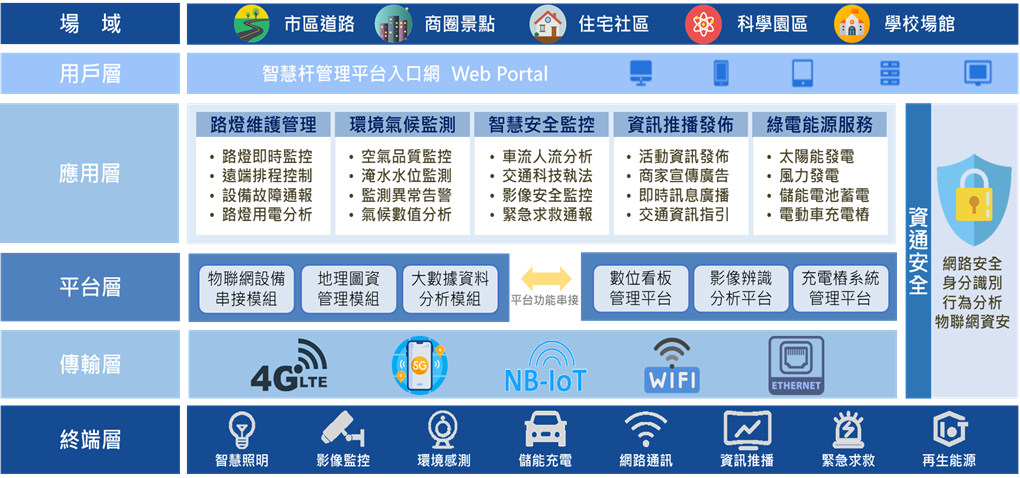
In the era of IoT and the Internet of Things, traditional streetlights have evolved into essential carriers equipped with connectivity and data collection capabilities. Leveraging their widespread distribution across cities, streetlights can integrate monitoring, energy-efficient lighting, environmental sensing, traffic management, and safety applications with cloud computing technology. This transformation turns ordinary streetlights into smart poles that provide integrated services, enhancing convenience for citizens while also serving as a cornerstone for building urban network infrastructure and big data analysis platforms in smart cities.
Applications
Urban roads, industrial parks, newly developed zones, campuses, and fishing ports are outdoor areas that require lighting.
Service Process
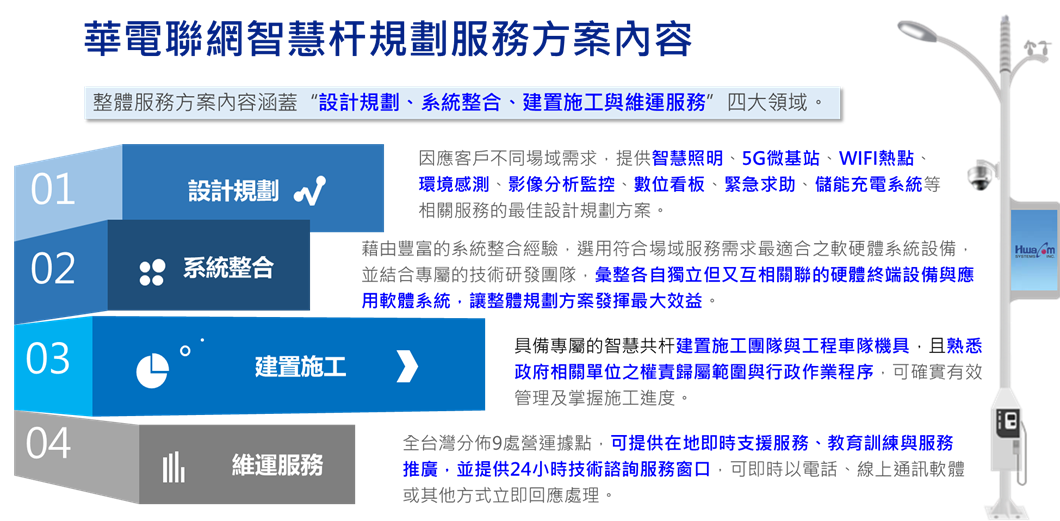
Contact Window
Success Cases
HwaCom Systems Inc. is a founding member of the 5G Smart Pole Standards Promotion Alliance and has participated in the deployment of 5G smart poles in Taipei and New Taipei City. Through fixed networks and 5G public telecom networks, it has conducted application verification for 5G connectivity, smart lighting, video-based traffic detection, charging stations, environmental sensing, and digital signage, while also targeting future global business opportunities in the 5G smart pole market.
